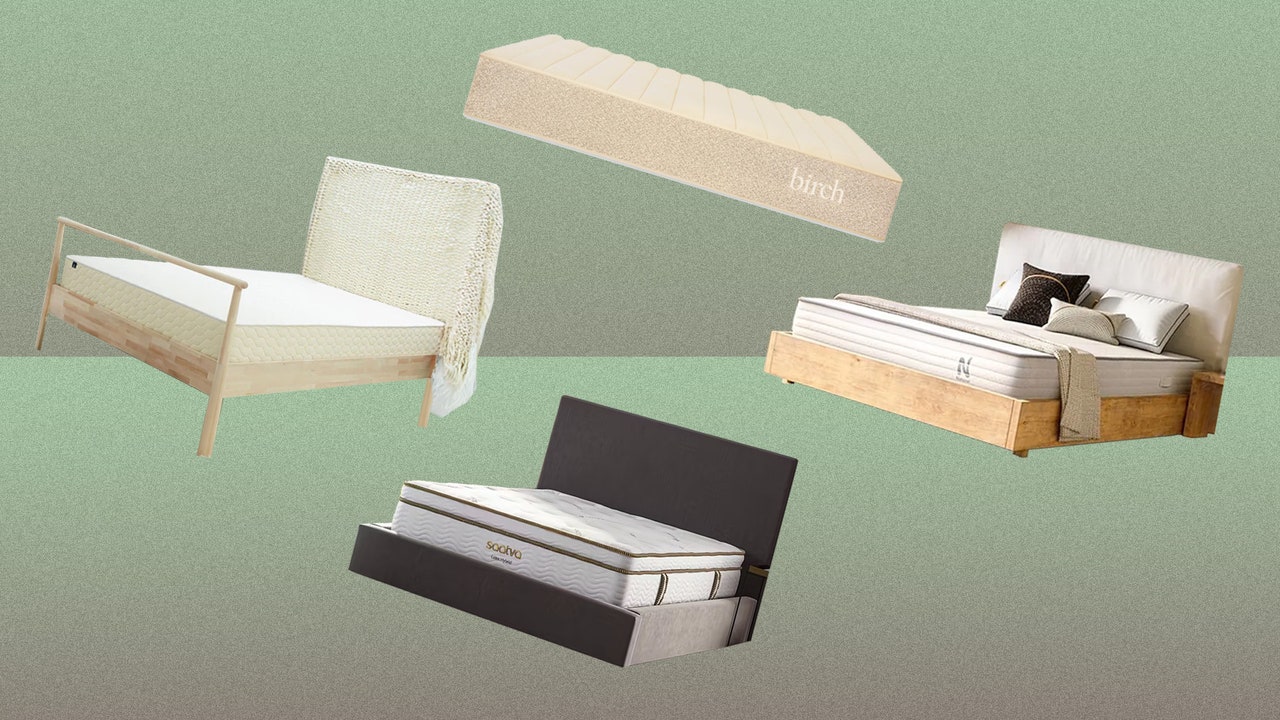For a full rundown of our mattress testing process (and to discover how much we nerd out on sleep technology), check out our full sleep product testing methodology.
What Are the Benefits of a Latex Mattress?
There are a lot of reasons to love latex, but according to Dr. Purdy, there are three main benefits latex mattresses can have on your sleep quality.
- Spinal alignment: Though latex mattresses can feel plush, they’re still firm enough to help keep your spine properly aligned.
- Breathability: With no heat-trapping layers like those found in memory foam mattresses, latex foam offers superior breathability for cooler sleep.
- Comfort and support: While comfort is subjective, many people appreciate latex’s combination of cloud-like cushioning and support.
Who Is a Latex Mattress Best for?
Dr. Purdy says there are no hard and fast rules for finding the right mattress for your sleeping position—anyone can sleep on a latex mattress so long as it’s subjectively comfortable and supports the body well. With that in mind, she has a few tips for choosing the right latex mattress based on your sleeping position.
- Back sleepers: Look for latex mattresses with zoned lumbar support that are firm enough to support your hips and shoulders. A mattress that’s too soft could lead to back pain.
- Side sleepers: Firmer latex mattresses with lumbar support can work for side sleepers, too, as long as the zoned support doesn’t create discomfort under pressure points. However, those who sleep on their side will need more pressure relief than back or stomach sleepers, and likely a softer mattress.
- Stomach sleepers: This position requires support for the back and head. Whatever latex mattress you choose, make sure your body doesn’t sink in around the hips. This causes the low back to arch out of alignment, which can lead to discomfort.
What You Should Look for in a Latex Mattress
Several key features can be the difference between a good night’s sleep and a restless one. When shopping for a latex mattress, keep an eye out for the following:
Latex Density
According to Dr. Purdy, latex density affects how supportive and durable a latex mattress is. It can be a good predictor of how well a mattress will hold its shape over time—the higher the density, the more firm and durable the mattress. However, if you sleep better on softer, more responsive mattresses, you might find a low-density option more comfortable.
Type of Latex
There are two types of latex: natural and synthetic. Natural latex is made from the sap of rubber trees, while synthetic latex is derived from chemical processes. Occasionally, you can find mattresses made with a blend of both types, but they’re usually one or the other. Differences in the feel of natural and synthetic latex are subjective, but some consumers prefer natural latex because it’s biodegradable, whereas synthetic latex is not. Also, synthetic latex is generally more affordable than natural latex, so it appeals to budget shoppers.
Firmness
Mattresses come in a variety of firmness levels that fall on a scale of one to 10, with one being the softest and 10 being the firmest. No matter what sleeping position you like best, Dr. Purdy recommends a firmer mattress for proper spinal support. People tend to love latex hybrid mattresses because they offer the firm support of coils and the softness of latex foam.
Pressure Relief
If you’re prone to morning aches and pains, look for a latex mattress that offers targeted pressure relief through zoned support. This feature—especially on a firm mattress that doesn’t allow for much sinking—can help reduce pressure on your hips, shoulders, and other key points of contact.
Motion Isolation
Latex is not known for its motion isolation, but some mattresses do a better job of it than others during testing (sometimes due to a foam base rather than coils). This is important to consider if you’re easily disturbed by movement and share a bed with a partner or pets.
Cooling
Hot sleepers, rejoice! Natural latex is breathable, and most latex beds also use an innerspring coil system that promotes airflow. So while you might not find any fancy copper-infused foams or other cooling technologies in latex mattresses, you can sleep well knowing this material won’t retain much heat.
FAQs
Which density of a latex mattress is best?
Dr. Purdy suggests a firmer, high-density mattress over a softer, low-density option for proper spinal support. However, she says the right density depends on weight and sleeping position. Whatever keeps your spine in proper alignment while you snooze is the best density for you.
Do latex mattresses sag over time?
Eventually, all mattresses reach their sagging point, but Dr. Purdy says that latex is pretty resilient and holds its shape over time better than other mattress materials like memory foam.
How much do latex mattresses usually cost?
You can expect to spend anywhere from $1,000 to $3,000 on a new latex mattress. The price depends on factors like size, brand, and features.
Is latex better than memory foam?
Dr. Purdy says latex is usually firmer than memory foam, but not necessarily better. It really comes down to personal preference and what works best for your body and sleep needs. For example, hot sleepers may prefer latex because it doesn’t trap as much body heat, but those with sensitive joints may like the close contouring of soft memory foam over the more buoyant feel of latex foam.
Is latex eco-friendly?
Yes, natural latex is eco-friendly. Because it’s sourced from rubber trees, it is a renewable resource, and most latex mattresses tend to be made with other organic and sustainable materials.

